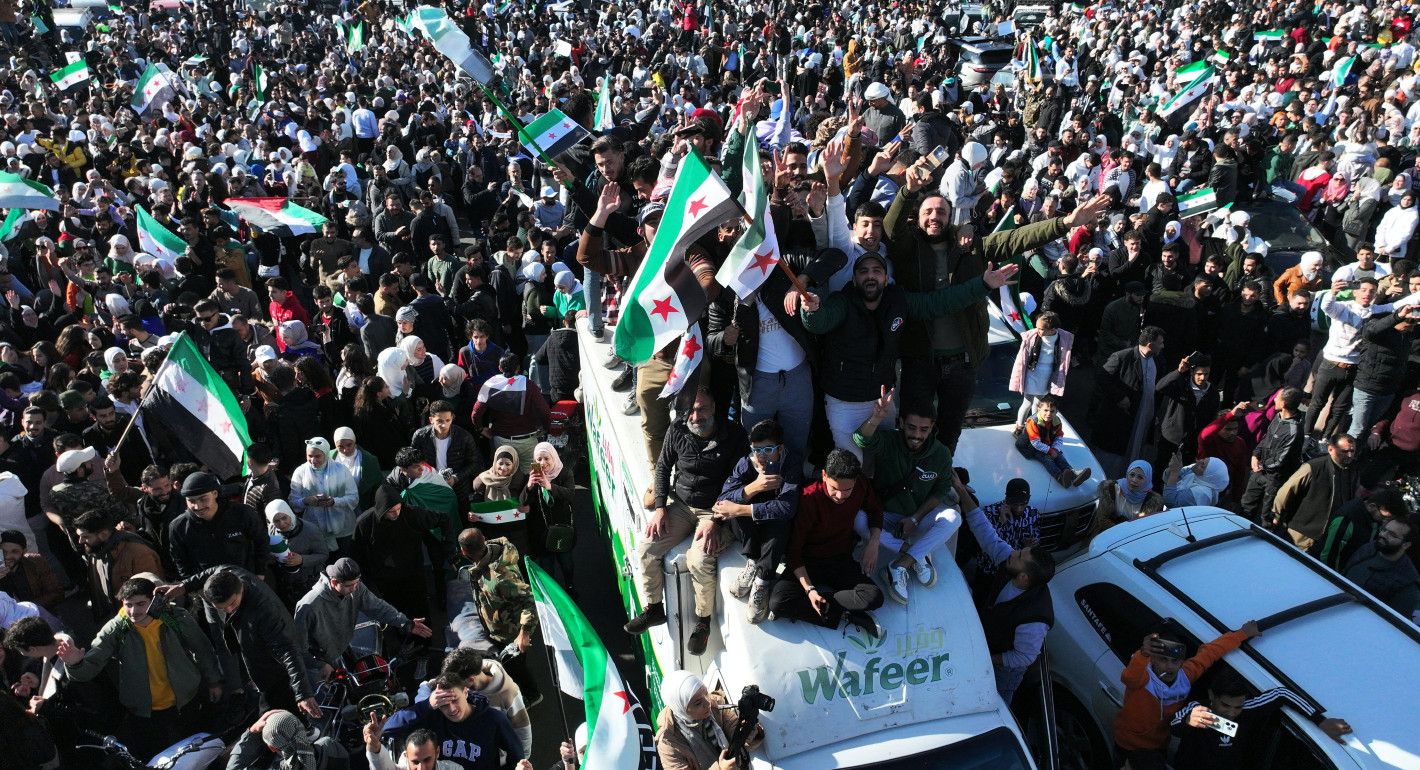Jubilant crowds tearing down statues and posters of a hated despot. Feared prisons emptying out their longtime occupants. City squares hosting raucous rallies and solemn Friday prayers, free from the prying gazes of the security services.
These exultant scenes in Syria, where a rebel coalition toppled longtime president Bashar al-Assad in December, recall another Arab revolution whose euphoric aftermath and bitter unraveling we witnessed firsthand.
The 2011 fall of Libyan dictator Muammar Qadhafi at the hands of a popular uprising backed by NATO intervention was initially greeted with hopes for democracy. Yet the country soon fell into lawlessness, militia infighting, and terrorism. Some observers have warned that Syria could follow the same path—or worse.
Such pessimism is not misplaced: a cursory glance at the differences between Syria and Libya suggests Syria faces far greater difficulties.
Syria is more heterogeneous and fragmented than Libya, at least in ethnolinguistic, denominational, and regional terms—though these affiliations were long exploited and militarized by Assad during his repressive rule and crackdown. Its economy and infrastructure were decimated during a ten-year conflict. It witnessed the largest displacement of people in the twenty-first century. And vast chunks of Syria’s territory fell into the hands of terrorist organizations and militias.
In contrast, Libya’s population is smaller and more homogenous, notwithstanding the divisions that emerged during and after the revolution, often based on ideology, patronage, and locale. Libya’s uprising lasted only eight months, leaving its oil-dependent economy largely intact—though Libyan factions have engaged in a zero-sum struggle over the control of oil resources.
While uprisings in both countries devolved into proxy wars involving external actors from within the Middle East and beyond, Syria experienced far worse devastation given Russia’s indiscriminate bombing campaign and the intervention of militias backed by Iran.
Yet Syria need not suffer the same fate as Libya. Rather, Libya’s experience shows that early leadership and decisionmaking matter. During this crucial period, Libya’s leaders made two fateful mistakes that Syrians should avoid.
First, they became obsessed with punishing anyone associated with the Qadhafi regime.
All transitional leaders grapple with how to hold officials from the ancien régime accountable, deciding who should be prosecuted and who should be vetted and allowed to participate in the building of the new order. But in Libya, this imperative quickly became an excuse for score-settling and personal vendettas.
In 2013, the country’s interim parliament passed a sweeping “isolation law” that called for the political and economic disenfranchisement of broad categories of Libyans. Many had only the slimmest of connections to the toppled government. The result was predictable: The split between Libyans who benefited from the legislation and those who suffered from it helped precipitate a violent civil war.
Syria’s new leaders should ensure that efforts to deal with Assad regime officials center on conduct rather than affiliation or title. Only those found guilty of abuses in fair trials should be excluded from government service. Bureaucrats in sectors such as education and health should not be branded as irredeemable stalwarts of the old regime. Relatedly, revolutionary leaders who exclude their former partners from power-sharing arrangements are also inviting a return to conflict.
Second, Libya’s government made the early fatal error of bolstering the country’s predatory and unaccountable militias.
Aiming to control and reward the revolutionary armed groups that fought against Qadhafi while appeasing key political factions, Libyan authorities placed the militias on state payroll and attached them to ministries. As a result, their strength skyrocketed. Attracted by the promise of a salary, thousands of young Libyan men—many of whom had not participated in the revolution—rushed to join a militia. Their leaders emerged as a new class of warlords. Meanwhile, the regular army and police stayed weak and underfunded.
Today, these militia bosses and their allies are the effective masters of Libya, having captured key functions of the state and its oil wealth. Unwilling to part with their privileges, they have blocked any moves toward an inclusive democracy.
To avoid a similar scenario, Syria’s leaders need to avoid empowering the country’s militias, including those that fought Assad. Revolutionaries who want to join the army and police and should be encouraged to do so—but as individuals. Enrolling the militias en masse into the government and channeling money to their commanders will create a country ruled by warlords, like Libya.
That said, pushing for the immediate disarmament and demobilization of the armed groups is unrealistic. Given the weakness of Syria’s army and police, doing so would create a security vacuum. Instead, Syria’s leaders could adopt a two-pronged approach: rebuilding a formal security sector governed by the rule of law while gradually dismantling the militias and ensuring that their members are given alternative opportunities for work or training.
Analogizing is always fraught with pitfalls, yet Libya’s journey after Qadhafi underscores the impact that early policy choices have on whether a revolution succeeds or fails. Unfairly targeting a broad swathe of citizens for retribution and enabling the growth of militia power were two key blunders that sabotaged Libya’s transition from autocracy to democracy.
As they embark on their own uncertain transition, Syrians can learn from Libya’s experience, and they would be wise to do so.





